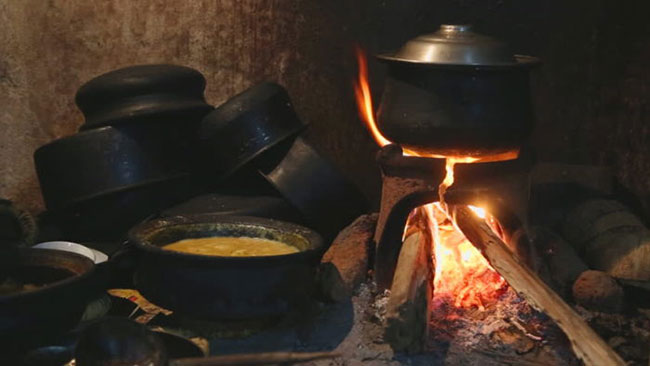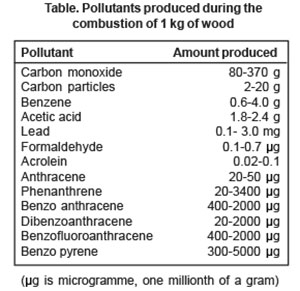Opinion
Firewood cooking and its effects on human health

By Professor O.A.Ileperuma, Emeritus Professor, University of Peradeniya)
Former Minister Sarath Weerasekera has recently stated in Parliament that using firewood instead of LP gas would increase a person’s life expectancy. According to Weerasekera, the life expectancy of women living in countries that use firewood for cooking is far higher than that of the people in developed countries who use new and clean energy for their cooking. This is far from the truth and contradicts all scientific findings on the ill-effects of firewood cooking. Increase in Life expectancy in Sri Lanka is due to other reasons such as better healthcare provided free of charge and the increased educational levels. According to WHO statistics 8 million people die every year due to breathing dirty air and out of which 4.3 million deaths can be attributed to indoor air pollution, particularly cooking with firewood and other types of biomass such as cow dung or even coal, in congested kitchens. In India, a scientific study has revealed that 50% of the ill health in mothers and 35% of the illnesses of children is due to kitchen smoke. Children are affected since they spend more time with mothers rather than fathers who normally spend their time outside the kitchen. Diseases like pneumonia, bronchitis, asthma and other pulmonary diseases are quite common among these two categories.

In Sri Lanka, with the current shortage of cooking gas, people are increasingly shifting to firewood for cooking. Even before this scenario, firewood is the fuel used for cooking in nearly 70% of the households. Now, even urban dwellers have to resort to using firewood and very often this is carried out in congested kitchens without adequate ventilation. What is important is not to stop using firewood but to take adequate precautions against its adverse effects.
Around 370 chemicals have been identified from wood smoke and the following Table gives some of the pollutants in wood smoke.
See Table
Carbon monoxide causes headaches because it reduces the supply of oxygen to the brain and compounds such as acetic acid, formaldehyde and acrolein cause eye irritation creating tears. Both of these are common symptoms experienced by people in the short term during firewood cooking. Through years of exposure, our mothers who spend a lot of time in indoor kitchens may develop lung cancer due to the toxic aromatic hydrocarbons such as anthracene, benzopyrene etc. Lung cancer is prevalent in heavy cigarette smokers and it is a pity that those who do cooking at home get the equivalent of nearly 100 cigarattes during one bout of cooking!
Fine particles of carbon in the form of black smoke is the most dangerous air pollutant. What is most toxic are the fine particles which cannot be seen with the naked eye since these can penetrate into the air sacs of the lung. Natural reaction of coughing is to eliminate the larger particles while the smaller particles of carbon often having adsorbed aromatic compounds can damage the protective alveolar lining of the lung. This can result in caancer causing chemcials to enter the blood stream. It also exposes the lung tissues to attack by various viruses and bacteria causing all types of lung diseases such a bronchitis and chronic obstructive pulmonary disease (COPD).
How can people survive in these difficult times where it becomes imperative to use firewood? What is needed is that people should be properly educated about the dangers of using firewood and to take adequate precuations during cooking. People should be encouraged to cook in an outdoor open kitchen which helps to disperse the pollutants instead of an enclosed kitchen indoors. In some countries such as India and China, coal is used for cooking inside cramped kitchens. A positive correlation between lung cancer and coal cooking has been reported from the Xuan Wei county in China.
In addition to firewood a common source of fine particles in our homes is burning mosquito coils and incense sticks. Mosquito coils are used by two billion people worldwide and 12 billion coils are used every year. The composition of a typical mosquito coil has pyrethroids, coal dust/coconut husk, binders and resins. Burning one mosquito coil produces enough fine particles which we call PM2.5 (particles smaller than 2.5 microns, a micron is one millionth of a metre) as 100 cigarettes and as much hydrocarbons produced by 50 cigarettes. Burning incense sticks inside homes is also unhealthy as they produce a lot of fine particles and also polyaromatic hydrocarbons, benzene, and CO.
Life expectancy of females in Sri Lanka is 80.3 years and there are at least 60 countries with a higher life expectancy than Sri Lanka using cleaner fuel. Countries in South Asia who have similar cooking habits have much lower life expectancies: Bangladesh (74.9), Bhutan (72.5), Nepal (72.5), India (71.2) and Pakistan (67.3). What is needed is not to stop using firewood but to use it safely to avoid adverse health effects and also get educated on the proper use of firewood.